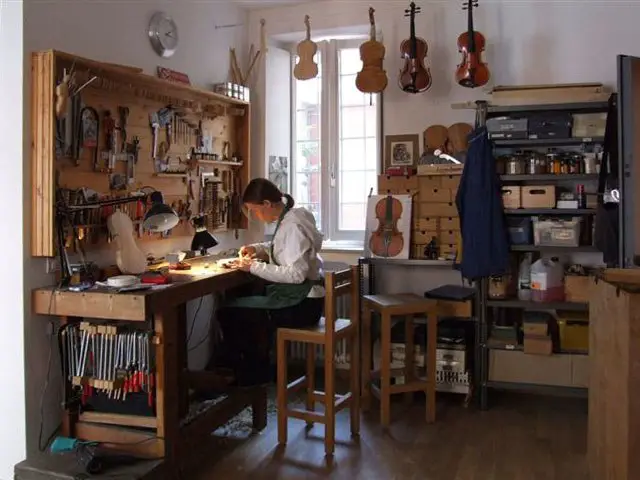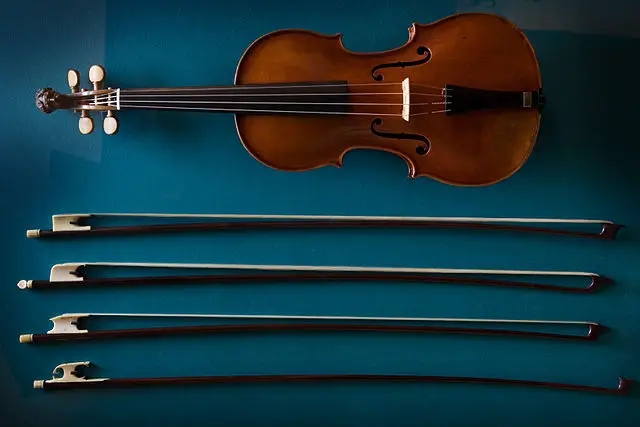The first violin was made in northern Italy, where the tradition of making violins has lasted for centuries. But today, there are more options for those who want reliable violins to help them master their skills.
The technological development allowed more luthiers to make violins, and the name of China has been popping up for several years as the source of many violins. So, are Chinese violins good?
Here’s whether Chinese violins are any good:
There are some good Chinese violins and some bad ones. Sometimes Chinese Violins are associated with poorly made and mass-produced instruments, however, this isn’t always the case. The quality of the violin is related to craftsmanship, attention to detail, and quality control. Research thoroughly and purchase from a well-known manufacturer.
Table of Contents
What is a Chinese Violin?
A Chinese violin is a violin made according to the designs of the masters, but instead of being manufactured in Europe, it’s made in China. Several factories in China currently produce high-quality violins using excellent materials.
There’s also a special Chinese instrument that’s been used as a violin for hundreds of years. It’s a two-stringed bowed instrument that’s known in the western world as the two-stringed Chinese violin.
The erhu or the Chinese violin is a versatile instrument that plays a crucial part in traditional and contemporary music arrangements, including pop, jazz, and rock.
The Chinese violin appeared for the first time during the rule of the Tang dynasty. It sounds nothing like the western violin, which has four strings and can produce a wider range of tunes.
However, it proves that Chinese luthiers have been making violins for almost 1000 before the western world manufactured the first one.
How are Chinese Violins different?
Unfortunately, there’s a misconception that low-quality is always associated with any product labeled as “Made in China.” However, this is no longer true.
There are a lot of high-quality products that Chinese designers and manufacturers produce and export to every other country in the world.

Chinese luthiers have stepped up their game during the past few decades by using high-quality woods and cooperating with renowned international manufacturers to produce a Chinese version of the highly prized western violins.
Chinese violins often cost almost half the price of their European-made counterparts, mainly because of inexpensive labor.
The hourly rate of a Chinese worker is much less than that of a European one, which results in less expensive violins. However, this doesn’t mean that Chinese workers are less accurate than the European ones because they too have quality control standards to follow.
Where are Most Violins Made?
It’s well known that Italy is the world’s center for violin making. But because Italian violins typically cost thousands of dollars, there are only a few violinists and collectors who are able to afford them.
On the other hand, China has established its name as a worldwide violin manufacturer. Chinese violins come in all shapes and prices to suit different players and learners from all over the world, offering a chance to own a reliable violin for an affordable price.
Which Country Makes the Best Violins?
Italy makes the best violins in the world, and the workshops in Cremona have been working according to the same high standards for hundreds of years, producing exceptional violins according to the designs and manufacturing methods of the masters.
There are currently about 160 workshops in Cremona, Italy, offering the same designs that fascinated people for centuries. But due to the low market for high-quality and exceptionally expensive violins, these workshops only offer their products to a few violinists and collectors.
Check out ‘Cremona’ the Italian capital of Violin making:
How are Chinese Violins Made?
There are two types of Chinese violins on the market today; low-quality and high-quality ones.
The high-quality ones, like the ones produced in the village of Donggoa, northeast Beijing, focus on the details, craftsmanship, and well-sourced materials. This village alone produces about 200,000 violins every year.
The violin-making business started in the 1980s, and over time, the violin makers have managed to fine-tune their production process to produce better quality violins for a price that’s significantly less than that of European and American-made violins. The workers use their hands and the traditional tools, and they’re extremely meticulous in making sure that their violins are flawless.
At the same time, China is also a manufacturer of mass-produced violins that cost only a few tens of dollars. You can even find Chinese violins that cost $50 or less on the market. These are machine-made violins, and they’re produced in factories that focus on quantity over quality.
This is why you need to be careful while shopping for a Chinese violin. Some violins are well-built, and the instruments are reliable and beautiful, while others are extremely cheap and aren’t worth the price.
What do Chinese Violins Sound Like?
This depends on how they’re made.
Some Chinese violins sound really good because the luthiers import the highest-quality types of wood from Asia and Europe and follow detailed designs to perfect every detail. They have high-quality strings and bows, and they come fine-tuned so you can play the instrument right away.
There are also some low-quality Chinese violins that you need to be aware of. These sound hollow, and the tunes have no depth or color. China offers both varieties.
Are Chinese Violins Good for Beginners?
Some Chinese Violins make excellent first instruments for beginners. Chinese violins are the next best thing if you can’t afford an instrument that costs several thousands of dollars.
As a matter of fact, you don’t really need to get such an expensive violin, and you can consider an upgrade once you’ve mastered your skills as a violinist.
The SKY 4/4 Full Size SKYVN201 Solid Maple Wood Violin is a solid choice for beginners. It costs less than $100, and it’s made of high-quality spruce wood and varnish to give it the needed depth and color.
How Much are Chinese Violins?
The market for Chinese violins is very diverse.
For example, you can find a violin that costs $200 and another one that costs $3000. However, many Violinists are now opting to spend $3000 on a well-made Chinese Violin whereas the equivalent may cost $10,000 or more in Europe.
Why Are Chinese Violins so Cheap?
There are two factors that cause Chinese violins to be less expensive than the ones made in other parts of the world.
The first one is related to low-labor wages. The average minimum labor wage in Beijing is about 24 yuan per hour, which is almost $3.77 or 3.34 euros.
In a country like Italy, there’s no minimum wage set by law. But according to agreements, a laborer can make about 7 euros per hour. This is double what someone makes in China while doing the same job. Of course, more skilled laborers and luthiers make a lot more.
The other factor is the workshop or factory setup. Some workshops offer high-quality Chinese violins that typically cost hundreds or a few thousand dollars.
There are also factories that mass produce cheap violins. These are of lower quality but are exceptionally affordable.
Who are the Best Chinese Violin Makers?
Today, there are several good Chinese violin makers that offer good violins for beginner, intermediate and more professional users. The quality and sound depend on the skills of the luthier and the nature of the materials used.
Several makers like Ming Jiang Zhu, Holstein, Scott Cao, and Fiddlerman offer exceptional violins that fall below the $3000 mark. They also offer strings, bows, and other accessories that can help you upgrade an older instrument to make it sound better.
Chinese Violin makers are winning more and more Violin making awards at the VSA (Violin Society of America). Feng Jiang is probably the best-known Chinese Violin maker, who graduated from the Beijing Conservatory of Music in 1988.
Are Chinese Violin Bows Any Good?
The quality of a Chinese bow depends on the manufacturer. Some Chinese bow manufacturers are so good that even German makers are outsourcing work to Chinese makers.
Traditionally, violin bows are made of different types of wood to provide the needed sturdiness and flexibility. However, in the past few years, carbon fiber has also been used to make high-quality bows. Carbon fiber is lighter than wood and more resistant to weather changes.
As with choosing a Violin, one of the most important elements in determining the quality of the bow is the reputation of the maker.

Where is the Best Place to Buy a Chinese Violin?
If you don’t know a trustworthy luthier or instruments dealer, you can find a good Chinese violin online.
There are tens of Chinese violins on the market, and you can check the reviews and feedback. Read forums, blog posts, and magazine advice before making any purchase.
Wrap Up
Some Chinese violins are really good because they’re hand-crafted from the finest materials. At the same time, they cost exceptionally less than the ones made in other parts of the world. However, you should be aware of the low-quality mass-produced instruments because they don’t sound as deep and are actually more difficult to play.
